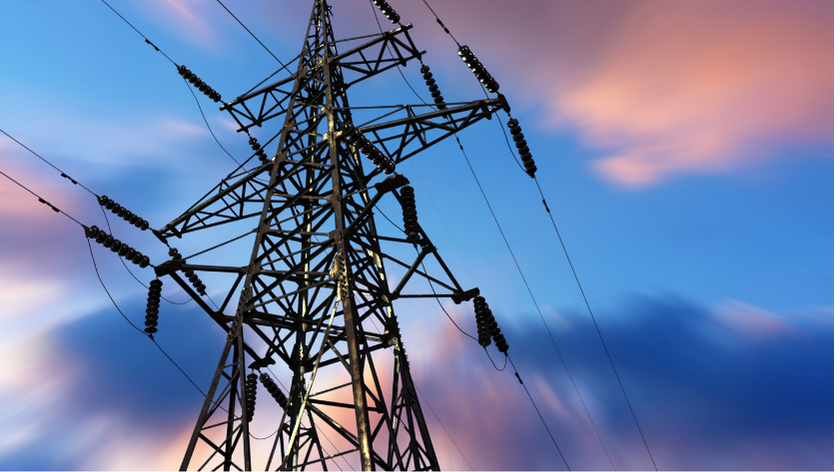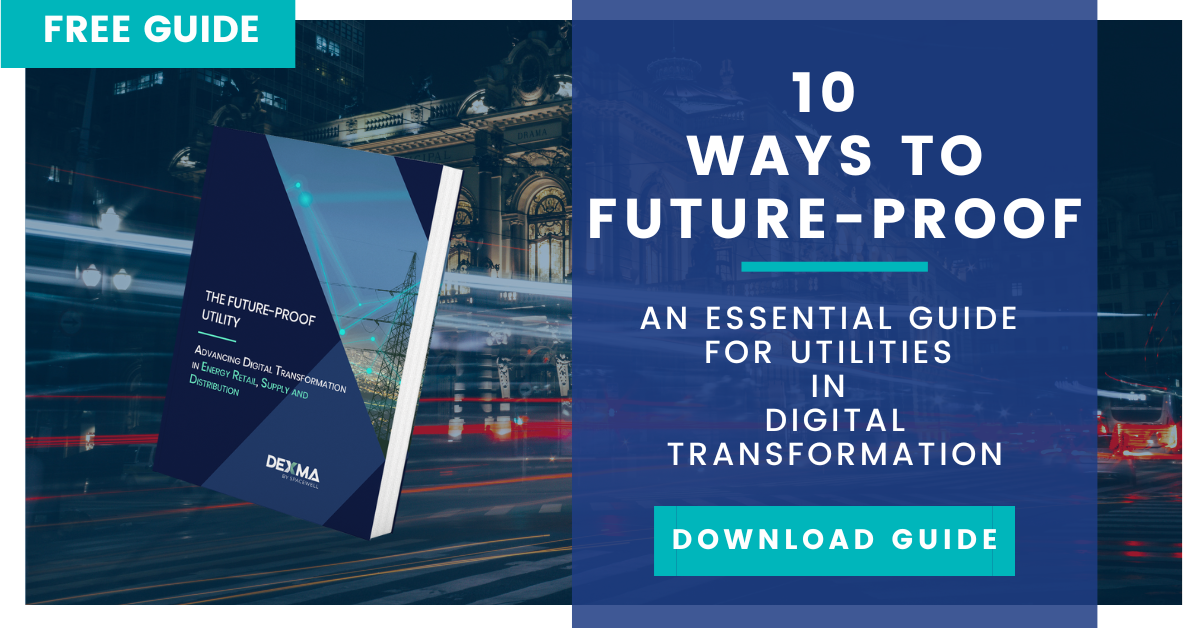Customer behaviour and choices are becoming the most important drivers in shaping the transition to a new energy system → How are you engaging with yours?
Innovating in a commodity market like energy is tough given that all your potential customers are essentially already penetrated – either they are with you, or with a competitor. Since 100% of your prospective clients in developed markets are already connected to the grid, the only way to gain traction and grow is to convince them to switch.
What does this mean for utilities? The ones that approach customers via multiple touchpoints have a much greater chance at success, meaning higher acquisition and retention rates. Read on to learn from 3 challenger utilities that are pushing hard for customer empowerment.
Utilities Must Brace for the Retailisation Effect
Not only does technology underpin most utilities’ business processes, but it has also fundamentally shaped the way they interact with their customers — not least by increasing their expectations.
At the same time, the focus has now turned from pushing products and services to creating value for customers. One way to do this is by elevating the entire customer experience through personalisation. So in addition to creating an organisational culture that promotes and invests in innovation as we explained in a previous post, getting closer to customers to find out who they are and what they really want is more important now than ever for utilities that want to future-proof themselves.
PwC describes this phenomenon as the “retailisation” concept. Retailisation is the nurturing of a more direct relationship between utilities and consumers, similar to what is happening in online shopping, music streaming or mobility. This change can also already be observed in the telecom industry: where once we paid for long-distance and local calls, now we pay for data streaming speed and capacity.
We are already seeing the early steps toward retalisation in the energy sector too: from real-time digital experiences to virtual audits, and energy management solutions to time-of-use billing and mobile payments. But there is a long way to go yet – for instance, PwC reports that less than half of customers received outage information directly from their utility in 2015. Considering that the average utility customer only spends 8 minutes per year interacting with their utility, there is some cause for concern. After all, digital native millennials, which are quickly becoming the prime segment across industries, expect a frictionless experience across all channels. The problem? Most utilities are only just starting to chip away at this challenge.
An Elevated Utility Customer Experience Pays Off
Research shows that utilities who build customer centricity into their energy services from day zero are seeing clear benefits. For instance, ComEd, the largest utility in Illinois, which has a clear customer focus in their smart grid plans, experienced a 2.8% rise in J.D. Power’s 2016 survey over their 2015 score, according to an Indigo Advisory Group report.
Here are some more examples of “challenger” utilities in the US, UK and Europe that are using fresh customer experience strategies and to engage with their customers in new ways, and are bringing those insights back to help them refine and reinforce their business strategies.
3 Customer-Centric Utilities to Learn From
1. HolaLuz
According to a study by The Social Media Family consultancy, HolaLuz stands out as one of the most customer-centric utilities in Spain.
Appearing only a few years ago in 2011, HolaLuz has grown to amass 70,000 clients in just 6 years, adding 3,000 new customers every month.
How did they manage to grow to hack a saturated commodity market? By digitalising their business model and enabling a fearless and frictionless switching process – effectively creating the first “future-proof utility” in Spain.
According to Carlota Pi, HolaLuz co-founder and CMO: “To be customer-centric – period – is to say and do what you promise. It means simplifying things for customers and giving them the freedom to choose, with full transparency, including leaving if they so choose – with no strings attached.”
HolaLuz places the customer at the centre by offering personalised digital services and eliminating barriers to change, not only by going digital-first but by eliminating fears and giving customers as much control as possible over their energy in 4 important ways:
- Guaranteeing that consumers will never find themselves without power if they decide to switch
- Taking care of the end-to-end switching process in an agile way, free of charge
- Resolving any fears, doubts, or questions customers have through dedicated, in-house online support (chat) – no outsourced call centres, no passing through ten different departments to explain your issue for the nth time
- Billing is simple, transparent and clearly explained. Customers also get a pre-invoice every month – just to make sure there are no surprises, ever.
“In the future we will be more a tech company than an energy company. We will be a tech company that provides energy services,” affirms HolaLuz co-founder Oriol Vila. “We have a Big Data team and it’s their job to get to know the customers in order to offer them services that fit their needs.”
2. Drift
It’s no secret that GAFA (Google, Amazon Facebook and Apple) are muscling their way into the energy sector on all fronts, from buying their own power directly or developing their own plants, typically powered by renewables. Herein lies the beauty of Drift.
As CEO Greg Robinson puts it: “We’re basically that energy buying team for everyone who can’t afford an energy buying team.”
Drift has turned the traditional utility business model on its head by offering customers incentives to reduce its costs and end prices. Touting simplicity, it makes money by signing up more customers, not by ratcheting up charges per customer. Although Drift could raise rates in the future, it probably won’t before it has amassed a solid (and loyal) customer base.
Drift is also future-proofing by becoming a demand response enabler. During a heatwave or some other factor that causes energy consumption to spike, Drift offers an incentive to customers that can reduce consumption during these periods of market tightness.
Drift currently operates out of Seattle, but has officially launched in NYC – where electricity was first used in the United States. It will be interesting to see if their model could be replicated here in Europe – in the meantime, the company has plans to roll out across the USA.
3. Pure Planet
Another challenger to highlight is Pure Planet, the brainchild of Virgin Mobile founders. One of the problems Pure Planet wanted to fix was the poor customer service often associated with traditional utilities. Long hold times, complicated processes, and a lack of empathy in communication are among the problems customers themselves cited when dealing with their providers. Moreover, it doesn’t exactly instil a sense of confidence when you have been passed to yet another department to explain your problem all over again.
That’s why Pure Planet checks how happy customers are with their service by tracking responses on social media. They also market themselves as another digital-first energy retailer that offers their services and billing almost exclusively through an AI-powered app and intuitively-designed website.
As Pure Planet co-founder Steven Day says, “The world is becoming digital. You can get through to a person using Pure Planet if you want to, but most people don’t feel the need to talk to people nowadays and are happy to use apps to deal with day to day billing and services – when was the last time you spoke to someone on the Apple app store, for example?”
In addition, their “membership model” is unique in the market, offering supply at wholesale prices and only charging a monthly £10 membership fee per fuel.
While it remains to be seen whether Pure Planet can compete with the Big Six — namely British Gas, EDF, E.ON, npower, Scottish Power, and SSE – it does promise to deliver enhanced customer service and lower prices through a transparent, lean and digital-first approach. By using data-driven technology and leveraging best practices from the telecom industry, Pure Planet can probably innovate faster than its incumbent competitors, who are often struggle with cumbersome legacy systems, mindsets and processes.
The Future-Proof Utility is a Customer-Centric Utility
Even though HolaLuz, Drift and Pure Planet are challenger utilities betting on the customer-centric approach, they have not and will likely never take over the actual infrastructure (powerlines and generating stations) that supply their customers’ electricity. Their core business is to lease distribution and transmission capacity based on the actual amount of power their customers need and use (a further incentive for efficiency!).
So it’s true that utilities are still essential in moving electrons from point A to point B, similar to how Amazon sees UPS or FedEx. But to stay on top of customer minds and wallets, nurturing a symbiotic, engaged customer relationship is key. Utilities that channel their efforts to embrace customer centricity rather than waste it fighting disruption are the ones that will come out ahead and prosper.
What’s more, energy management is a totally new and complex competency for many of your business customers – especially SMEs, who lack time and resources to manage and reduce the operating costs they spend on electricity and gas – up to 16% in the UK according to BMG Research for Ofgem. They will stick to the provider that helps them save the most, which presents utilities with a golden opportunity to offer the personalised, customer-focused assistance they crave, tailored to each vertical.
If utilities act now to develop a holistic, flexible, and scalable digitalisation strategy underpinned by a customer-centric ethos, they can power their own growth well into the future.




